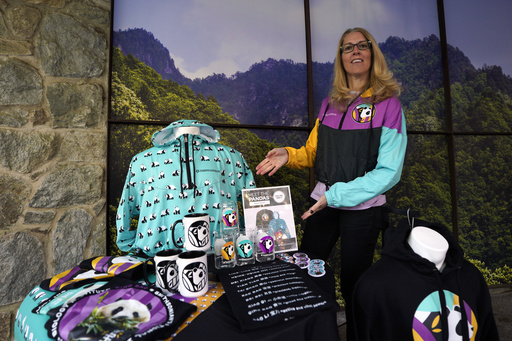
WASHINGTON – The latest additions to the National Zoo, giant pandas Bao Li and Qing Bao, are making their transition into their new habitat. These adorable bears are currently off-limits to the public until early next year, when the zoo will reveal its newly remodeled panda house.
When will panda enthusiasts get a glimpse of them? Unfortunately, it will take some time. The pandas will spend several weeks in quarantine, during which they will receive medical evaluations as they adjust to their new surroundings. Accompanying the bears are a team of caretakers and experts on giant pandas, along with a keeper and a veterinarian who traveled from China. They will remain in Washington for about a month to help with this transition.
The public unveiling is scheduled for Friday, January 24, 2025, accompanied by a special celebration of these new residents that will take place from January 29 to February 9. Zoo members can get a sneak preview and reserve tickets from January 10 to January 19.
As for how Bao Li and Qing Bao are interacting, not much so far. This separation is intentional; the bears only met during their transport from China, and they will continue to be kept apart at the zoo. This practice mimics their natural behavior in the wild, where adult pandas mostly live solitary lives, coming together only briefly during the female’s 48-hour reproductive period each year. The panda habitat at the zoo is designed in such a way that Bao Li and Qing Bao can thrive independently. In the wild, panda mothers typically stay with their cubs for about two years before they part ways.
What do these giant pandas consume? As strict herbivores, pandas relish an array of fruits and vegetables, with bamboo being their primary dietary staple. Their health can deteriorate rapidly without sufficient bamboo. The zoo sources its bamboo from the Smithsonian Conservation Biology Institute and approximately 15 bamboo stands around the greater Washington, D.C. area. However, donations of bamboo from private sources are not accepted.
Regarding the potential for panda cubs, it may be best to give Bao Li and Qing Bao some space for now. Both pandas are three years old and still a couple of years away from sexual maturity. Although they were selected for their compatible genetics, pandas can be quite particular about mating, and there’s no assurance that they will mate naturally. The zoo’s veterinary team is experienced in the use of artificial insemination, successfully applying this technique to produce the panda cub Xiao Qi Ji in 2020.
Is Bao Li considered a “nepo baby”? In a way, yes. His lineage traces back to previous National Zoo pandas; however, whether having such a family ties helps in the world of pandas is hard to assess. Bao Li is the son of Bao Bao, who was born at the zoo in 2013 and later sent to China in 2017, as a stipulation of the zoo’s agreement with the Chinese government. Bao Li and his twin brother, Bao Yuan, were born in China in August 2021.
For those looking to watch the pandas remotely, the beloved Panda Cam will relaunch on January 24. It consists of 40 cameras monitoring the bears’ activities, with a livestream available from 7 a.m. to 7 p.m. and overnight rebroadcasts of the day’s best moments. The zoo has upgraded its electronic systems to manage the expected influx of online viewers, a challenge they faced when Xiao Qi Ji was born on camera in 2020. Brandie Smith, the zoo’s director, mentioned that they considered an early launch for the Panda Cam, but decided to allow the pandas and their caretakers some privacy to bond before being in the public eye.
The National Zoo has a contractual agreement with China that spans ten years and requires the zoo to pay $500,000 per bear annually. Any cubs born at the zoo will incur additional fees and must be sent to China for participation in panda conservation and breeding initiatives before they reach the age of four.
As for the panda exhibit, the National Zoo has been diligently working on improvements over the past eleven months since Mei Xiang, Tian Tian, and Xiao Qi Ji returned to China last November. While the outdoor enclosure largely maintains its previous look, featuring some refreshed fencing and new climbing structures, the indoor facilities have undergone significant upgrades and renovations, which began even before finalizing the new cooperative agreement for the giant pandas’ return to Washington, D.C.
